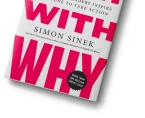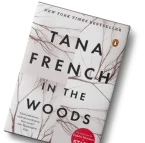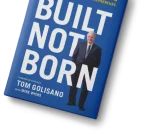
Writing mystery fiction is about more than hiding a killer or planting red herrings—it’s about creating a world where readers lean in, obsess over details, and gasp when the truth is finally revealed.
No matter if you’re a first-time novelist or an experienced storyteller dipping into the genre for the first time, mystery fiction offers one of the most immersive and addictive experiences in fiction writing. The challenge isn’t just coming up with a plot twist—it’s designing an experience where readers feel like detectives and then surprising them without cheating. From crafting clues to developing flawed but compelling protagonists, learning how to write mystery fiction means mastering narrative control, emotional pacing, and character psychology.
In this blog, you’ll learn how to approach mystery fiction as both an architect and an illusionist, laying down structure while building suspense. And if you’re ready to take your mystery novel from first draft to bookstore-ready, Estorytellers can guide you every step of the way from plotting and ghostwriting to editing, publishing, and promoting your story.
Let’s start by exploring what defines a great mystery and what today’s readers are hungry for.
What Makes a Great Mystery Fiction Story
Mystery fiction lives and dies on one thing: curiosity. At its core, a great mystery is a question that burns so brightly readers can’t help but chase the answer. Whether it’s a classic whodunit, a psychological puzzle, or a noir-style conspiracy, the mystery must grip the reader with unanswered questions—and reward them for sticking around until the very last page.
But mystery isn’t just about solving a crime. It’s about suspense, structure, and stakes. It’s about creating characters whose motives are layered, worlds where nothing is quite what it seems, and plots that unfold like clockwork but feel unpredictable. In great mystery fiction, every line matters. Every object, every glance, every piece of dialogue can carry a double meaning. The art lies in making it feel effortless, like the truth was there all along, hiding in plain sight.
Today’s readers, especially in the U.S., crave mystery stories that go beyond simple puzzles. They want characters who feel human, themes that resonate, and twists that surprise without feeling cheap. Gone are the days of neat endings with monocle-wearing detectives in drawing rooms. Modern mystery fiction blends genre tropes with psychological insight, emotional depth, and cultural nuance.
For aspiring novelists, this means you must balance reader expectations with originality. You’re playing a game with your audience, one built on trust. They’ll follow your breadcrumbs and second-guess themselves at every turn—but only if you’ve designed the journey with precision.
Estorytellers works with mystery writers at every level of development—from brainstorming killer hooks to refining plot structure, deepening character motives, and shaping satisfying endings that readers don’t just enjoy—they remember. When your mystery novel works, your readers become obsessed. And that’s the sweet spot every mystery writer is chasing.
The Hook, the Crime, and the Lie: Designing Your Central Mystery
Every unforgettable mystery begins with a central question—and behind that question is always a crime, a lie, or a missing truth.
The “hook” is the promise you make to the reader in the first few pages. Maybe it’s a body found in a locked room. Maybe it’s a disappearance that doesn’t make sense. Or maybe it’s just the feeling that something—someone—isn’t quite right. A strong hook doesn’t just introduce a puzzle. It introduces tension, tone, and stakes. It sets the emotional compass for the entire novel.
But here’s the secret to designing a truly gripping central mystery: it’s not just about what happened. It’s about why it happened—and why your protagonist is the only person who can untangle the truth. Great mystery fiction doesn’t rely on coincidences or arbitrary plot twists. It’s about characters making choices, hiding secrets, and facing the consequences when the lies start to unravel.
Think of your mystery like a knot. The more personal, psychological, and emotionally charged that knot is, the more satisfying it will be when it’s undone. The crime or question should resonate on more than one level—it’s not just a plot device, it’s a thematic mirror for your protagonist.
At Estorytellers, we help authors sharpen their core mystery from the earliest brainstorming stage. Whether you’re outlining or revising, we work with you to ensure that your central conflict is layered, tight, and impossible to forget. Because in the world of mystery fiction, a compelling core mystery isn’t just the engine of your novel—it’s your first and last impression.
Smoke, Mirrors, and Misdirection: Clues and Red Herrings
A mystery novel is a mind game, and your readers are playing to win.
That’s why one of the most important aspects of writing mystery fiction is controlling what the reader knows, suspects, and believes at any given moment. To do this effectively, you must master two techniques: clue planting and misdirection.
Clues are the breadcrumbs—little signals the reader can look back on and say, “It was right there the whole time.” But planting clues isn’t about being obvious. It’s about disguising significance, layering context, and controlling timing. Maybe a character mentions a missing heirloom offhand, or a photograph on the wall looks just a bit… wrong. The best clues are ones that make perfect sense in hindsight, but are invisible the first time through.
Red herrings, on the other hand, are your weapons of misdirection. These are the false leads, suspicious behaviors, and logical dead ends that keep readers guessing. But a red herring should never be a cheat. It should be rooted in the characters’ goals and fears—something that could be important, but ultimately isn’t.
At Estorytellers, we help writers build these layers with purpose. Our editors and ghostwriters understand the delicate balance between misleading and manipulating. Together, we make sure your mystery rewards smart readers while keeping them on edge from chapter one to the final reveal.
Building a Compelling Protagonist
A mystery is only as strong as the character chasing the truth.
Your protagonist—whether a detective, amateur sleuth, journalist, or accidental witness—must be more than a plot device. They must be driven. That doesn’t mean they need to be fearless or perfect. In fact, the most gripping mysteries feature protagonists with personal stakes, internal contradictions, and hidden wounds.
Maybe they’re haunted by a past mistake. Maybe they have a reason to doubt the people closest to them. Or maybe they don’t even realize how close they are to the truth. What matters is that their emotional arc runs parallel to the mystery itself. As the case unravels, so do they.
Give them flaws, secrets, and blind spots. Let them make mistakes. And let them grow—because readers follow protagonists for their transformation, not just their deductions.
If you’re struggling to create a multi-dimensional lead, Estorytellers offers character development coaching and editing that goes far beyond surface-level feedback. We help you dig deep into motivation, psychology, and backstory—so your protagonist is as unforgettable as your plot twist.
Build Suspense Chapter by Chapter
Mystery fiction is a long con. Every chapter should tighten the noose while raising new questions.
Pacing in mystery isn’t about constant action—it’s about constant suspense. That means ending chapters on tension. It means revealing answers that lead to bigger questions. And it means controlling what the reader knows in relation to what the protagonist knows—sometimes aligning them, sometimes creating dramatic irony.
Here’s one proven technique: write every scene as if it has a secret. Someone knows something. Someone’s lying. Something is missing. When each scene has a narrative purpose and a question embedded in it, your readers can’t stop turning the pages.
Plotting a novel is hard. Plotting a mystery is harder. If you’re feeling stuck between outlines and rewrites, Estorytellers can help you shape your manuscript into a tightly paced, commercially viable mystery novel. We work with writers on structure, chapter flow, cliffhangers, and even genre-specific beats that satisfy publishers and agents.
Your Big Reveal, The Twist That Changes Everything
Every mystery builds toward one defining moment: the reveal.
But a great twist isn’t just about surprise—it’s about inevitability. When the reveal comes, your reader should gasp not because it came out of nowhere, but because they realize they should’ve seen it all along.
So how do you write a reveal that stuns without cheating?
First, play fair. The clues must be there. Second, make it emotional. The twist shouldn’t just resolve the plot—it should reframe everything we know about the characters. Third, make sure the twist solves the central mystery, but also says something deeper about the story’s themes.
And always—always—make the twist feel earned.
Estorytellers has helped dozens of mystery writers sharpen their endings and rework their reveals so they land with the emotional and narrative force they deserve. Whether you’re aiming for a jaw-dropping final chapter or a slow-burn emotional twist, our editors help you close the loop with style and purpose.
Publishing Your Mystery Novel
Once your story is complete, the real mystery becomes: how do you get it into readers’ hands?
For U.S.-based writers, you have two main paths: traditional publishing and self-publishing. Both have their pros and pitfalls. Traditional publishing offers broader distribution and prestige, but requires agents, query letters, and a competitive pitch. Self-publishing offers speed, creative control, and a growing indie market—especially in genre fiction like mystery.
No matter which path you choose, presentation matters. Your manuscript needs to be polished. Your blurb must hook. Your cover must speak to mystery readers before they even read the first line. This is where many first-time authors stumble—and where Estorytellers shines.
We offer full-service publishing support, from ghostwriting and editing to formatting, cover design, Amazon optimization, and marketing strategies tailored for fiction authors. Whether you’re building your first series or launching a standalone thriller, we help you turn your mystery manuscript into a professionally presented, high-converting book ready for the market.
Conclusion: How To Write Mystery Fiction
Mystery fiction isn’t just about answers—it’s about how you lead the reader to them. It’s about crafting characters who hide as much as they reveal, laying traps and truths in equal measure, and controlling the story like a magician with nothing up their sleeve.
Writing a mystery novel takes planning, creativity, emotional insight, and narrative discipline. But it’s also one of the most rewarding forms of storytelling you can master—both creatively and commercially.
If you’re ready to bring your mystery to life, Estorytellers is your behind-the-scenes partner. From brainstorming plot twists to publishing your debut detective series, we help writers turn great ideas into unforgettable novels. The clues are already there, now it’s time to write the reveal.































